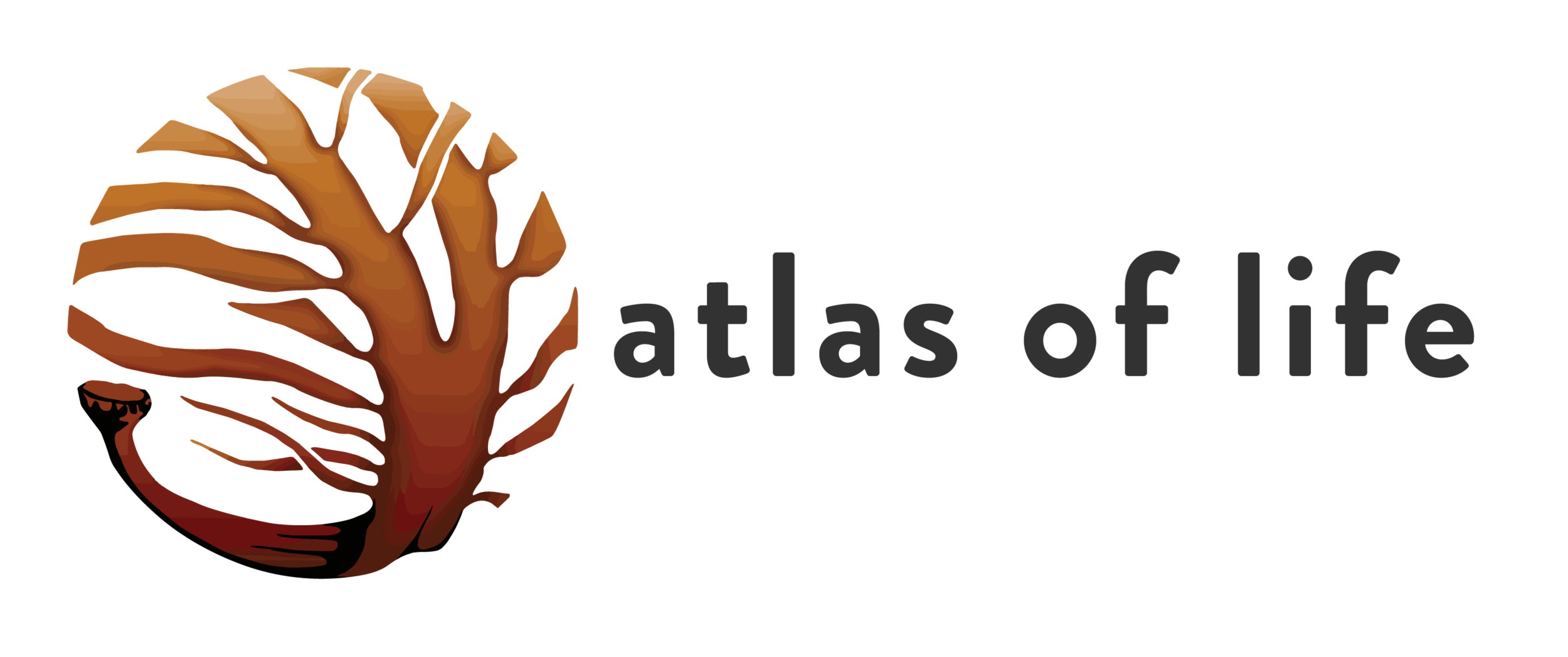The Atlas of Life in the Coastal Wilderness is an ongoing citizen-science project.
It was originally the initiative of a small group of dedicated people who, in 2011, recognised the biological importance of the far south coastal region of NSW. They sought to encourage the documentation of the area’s biodiversity, building a community-based resource and network of contributors.
The Atlas of Life has grown to involve hundreds of people, numerous organisations, and a wide variety of projects and initiatives. It is a volunteer, non-profit organisation now recognised as a Registered Environmental Organisation.
One part of the Atlas of Life region (photo courtesy of Richard Green )
The Region
The Atlas of Life encompasses the coast and hinterlands of the south-eastern corner of Australia - from the Great Dividing Range in the west, to the coast of New South Wales and eastern Victoria; from just north of Narooma in the north, to beyond Mallacoota in the south.
The region corresponds to the ‘South East Corner Bioregion' recognised under the IBRA environmental planning framework adopted by Australian governments.
As well as great tracts of National Park forests, heathland and riverine landscapes, the area has a coastline of spectacular and unspoiled beauty. Here the warm Eastern Australian Current flowing from the north, meets the cold, nutrient rich current from the Antarctic, creating rich upwellings and significant biodiversity. This is the first where place the humpback whales feed on their migrations south after breeding in the tropics. Here we find the edge of the range of a number of species. We know for some of these species that their ranges are shifting, so mapping their current locations will be valuable to scientists in the future.
the Atlas of Life Objectives
To foster understanding and stewardship of the world we live in by encouraging community involvement in real scientific endeavour
To encourage lifelong learning in and about nature for all ages and abilities, including the general public, our indigenous community, the young and the very young, disadvantaged and disabled
To use developing technology and develop multiple tools, training and activities to build capacity within our community to undertake and understand the results of scientific research
Through engagement and understanding, encourage a greater sense of appreciation and stewardship of our local environment
To undertake a range of surveys over time and in multiple locations including but not limited to: observing biodiversity, identifying invasive species and noting the impact of environmental change on habitat and species
Over the long-term, to create a rich and broad database of validated biodiversity data which will be a valuable resource for scientists, naturalists, educators and community into the future
To work with the scientific community in achieving the objects of the association and encourage scientists and naturalists to share their knowledge with the community
To liaise with government and non-government agencies and organisations, build co-operative arrangements and work with others to achieve the objects of the association.
To be politically neutral
To undertake such other activities that are incidental to, and supportive of, the above objects.
How to be involved
Everyone is encouraged to become involved with the Atlas of Life program of events and activities: locals and visitors; experienced biologists and people new to nature watching; individuals and organisations; adults and children.
Start contributing your own nature observations to the database. Simply register on iNaturalist and 'Report a Sighting’. Read more.
Keep up-to-date on news and events by signing up to our email newsletter, or by following us on Facebook.
Come along to Atlas Naturalists Field Days and Workshops: held throughout the year, throughout the region. Read more
Suggest a story for publication in the 'Creature Feature' section of the Atlas of Life website. Contact us.
If you have particular expertise with a group of organisms, consider sharing your knowledge by becoming a iNaturalist moderator. Contact us.
Partner organisations & affiliations
Sapphire Coast Science and sustainability Hub
A group of organisations with a common interest in things scientific and in encouraging everyone to engage with our environment and enjoy scientific activities to learn more and contribute towards a more sustainable future. Current membership includes: Atlas of Life in the Coastal Wilderness; Bournda Environmental Education Centre; Panboola; Australian Plant Society; Conservation Management Network; Coastal Wetland Carers Network; Mat-Sci-Tec - Into IT; Bega Valley Shire Council; Local Land Services (DPIE); Office of Environment and Heritage (NSW National Parks & Wildlife Service); Far South Coast Birdwatchers. Nature Coast Marine Group, Landcare NSW and the Australian Museum.
Organisational structure & administration
Current Committee (as at December, 2020) – Office Bearers: Libby Hepburn (Chair), Andrew Morrison (Vice-Chair), Raymond Daly (Secretary), Patricia Daly (Treasurer). Committee Members: Liz Allen, Maggie Clowes, Libby Hepburn, David (Macca) McCreery, Paul Whittock. iNaturalist administrator: Patricia Daly. Public Officer: Mandi Stevenson.
ALCW Constitution - download as pdf



